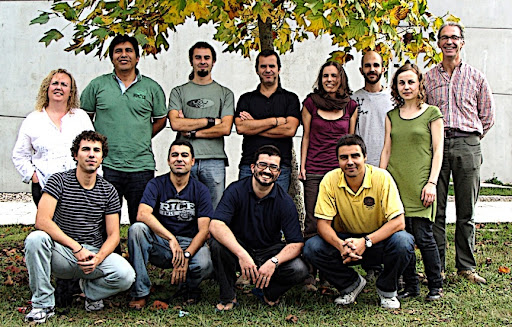Data: The Foundation of Science [Editorial]
by McIntyre, L. M.
Personal Reflections on the Origins and Emergence of Recombinant DNA Technology [Perspectives]
by Berg, P., Mertz, J. E.
The emergence of recombinant DNA technology occurred via the appropriation of known tools and procedures in novel ways that had broad applications for analyzing and modifying gene structure and organization of complex genomes. Although revolutionary in their impact, the tools and procedures per se were not revolutionary. Rather, the novel ways in which they were applied was what transformed biology.
Human Triallelic Sites: Evidence for a New Mutational Mechanism? [Population and evolutionary genetics]
by Hodgkinson, A., Eyre-Walker, A.
Most SNPs in the human genome are biallelic; however, there are some sites that are triallelic. We show here that there are approximately twice as many triallelic sites as we would expect by chance. This excess does not appear to be caused by natural selection or mutational hotspots. Instead we propose that a new mutation can induce another mutation either within the same individual or subsequently during recombination. We provide evidence for this model by showing that the rarer two alleles at triallelic sites tend to cluster on phylogenetic trees of human haplotypes. However, we find no association between the density of triallelic sites and the rate of recombination, which leads us to suggest that triallelic sites might be generated by the simultaneous production of two new mutations within the same individual on the same genetic background. Under this model we estimate that simultaneous mutation contributes ~3% of all distinct SNPs. We also show that there is a twofold excess of adjacent SNPs. Approximately half of these seem to be generated simultaneously since they have identical minor allele frequencies. We estimate that the mutation of adjacent nucleotides accounts for a little less than 1% of all SNPs.
Bayesian Computation and Model Selection Without Likelihoods [Population and evolutionary genetics]
by Leuenberger, C., Wegmann, D.
Until recently, the use of Bayesian inference was limited to a few cases because for many realistic probability models the likelihood function cannot be calculated analytically. The situation changed with the advent of likelihood-free inference algorithms, often subsumed under the term approximate Bayesian computation (ABC). A key innovation was the use of a postsampling regression adjustment, allowing larger tolerance values and as such shifting computation time to realistic orders of magnitude. Here we propose a reformulation of the regression adjustment in terms of a general linear model (GLM). This allows the integration into the sound theoretical framework of Bayesian statistics and the use of its methods, including model selection via Bayes factors. We then apply the proposed methodology to the question of population subdivision among western chimpanzees, Pan troglodytes verus.
A Genetic Analysis of Mortality in Pigs [Genetics of complex traits]
by Varona, L., Sorensen, D.
An analysis of mortality is undertaken in two breeds of pigs: Danish Landrace and Yorkshire. Zero-inflated and standard versions of hierarchical Poisson, binomial, and negative binomial Bayesian models were fitted using Markov chain Monte Carlo (MCMC). The objectives of the study were to investigate whether there is support for genetic variation for mortality and to study the quality of fit and predictive properties of the various models. In both breeds, the model that provided the best fit to the data was the standard binomial hierarchical model. The model that performed best in terms of the ability to predict the distribution of stillbirths was the hierarchical zero-inflated negative binomial model. The best fit of the binomial hierarchical model and of the zero-inflated hierarchical negative binomial model was obtained when genetic variation was included as a parameter. For the hierarchical binomial model, the estimate of the posterior mean of the additive genetic variance (posterior standard deviation in brackets) at the level of the logit of the probability of a stillbirth was 0.173(0.039) in Landrace and 0.202(0.048) in Yorkshire. The implications of these results from a breeding perspective are briefly discussed.




